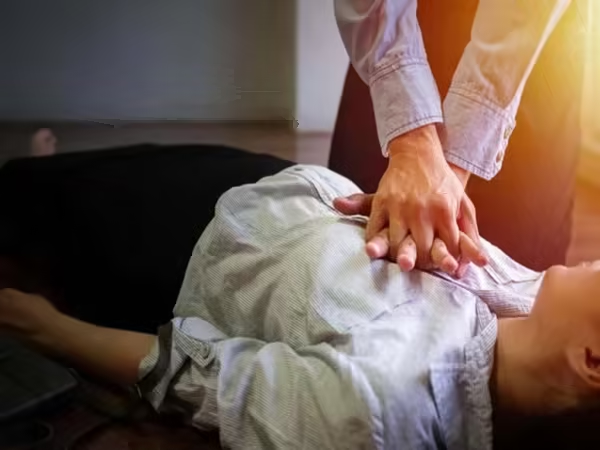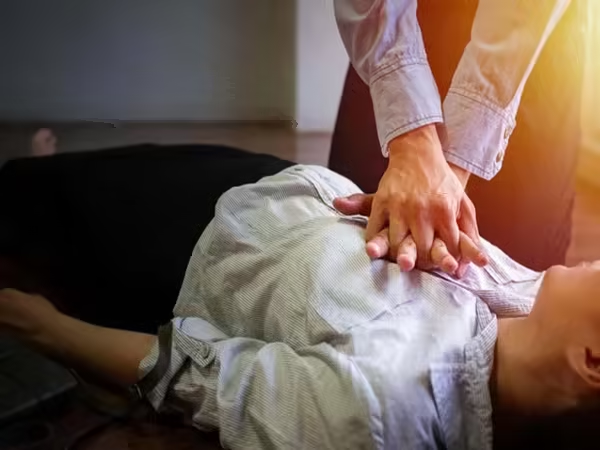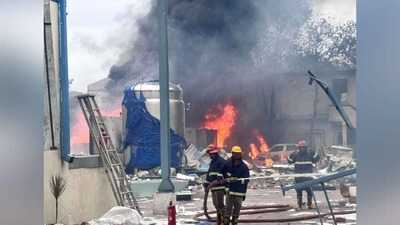

Cardiac Arrest Signs in Hindi: The risk of heart - diseases is increasing rapidly in today’s run -of -the -mill life and changing lifestyle. Often people consider heart attack and cardiac arrest as one, while both have significant differences and it is very important to save their early signs.
Understand the difference between heart attack and cardiac arrest
Heart attack (heart attack) It occurs when a artery that delivers blood to the heart muscle gets interrupted. This obstruction is usually caused by the accumulation (plaque) of fat, cholesterol or other substances. The blood flow is damaged by stopping or decreasing the muscles of that part of the heart. In a heart attack, the person usually remains conscious and feels symptoms.
On the other end, Cardiac arrest There is a completely different and more serious condition.This occurs when the electrical system of the heart suddenly stops functioning, which stops the heartbeat. This stops the circulation of blood immediately to the rest of the body, especially the brain. In cardiac arrest, a person suddenly falls, his breath stops and does not feel the pulse.This is a life fatal emergency.
Initial signs of heart attack: identify these symptoms
Symptoms of heart attack may vary in every person, And in women, they can also be slightly different from men. There are some common early symptoms that should not be ignored at all:
-
Chest discomfort or pain: This is the most common symptom.Pressure, tightness, heaviness or sharp pain may be felt between the chest or on the left. This pain can remain more than a few minutes or can come and go. It often feels like keeping something heavy on the chest.
-
Spreading of pain: Chest pain can spread to arms (often left), neck, jaw, back or abdomen.
-
Breathing shortness: Feeling difficulty breathing or taking difficulty even without any hard work.
-
Sweating: Sudden cold sweating, whether it is not heat or no physical activity.
-
Nausea, vomiting or abdominal pain: Some people may feel like stomach upset or indigestion.
-
Dizziness or unconsciousness: Sudden feeling weakness, dizziness or fainting.
-
Unusual fatigue: Feeling too much tiredness without any reason, especially in women, it is a common, but ignorant symptom.
Cardiac arrest signs
Symptoms of cardiac arrest are sudden and dramatic:
-
Suddenly falling unconscious.
-
Do not breathe or breathe very slow and unusual.
-
No pulse (pulse) feeling.
What to do if you see such symptoms?
Do not delay even a moment if you see symptoms of heart attack or cardiac arrest.It is a medical emergency.
-
Call emergency number immediately: Call 108 or other local emergency number without thinking.
-
Lay the person: If the person is conscious, then lay it comfortably.
-
Give aspirin (if available and the person is not allergic): If the doctor advises to take aspirin first or the person is not allergic to it, then chew an adult aspirin to swallow. It can help dilute the blood.
-
Start CPR (if you are trained): If the person is unconscious, not breathing and does not have a pulse, then immediately start CPR (cardiopulmonary rescuation) until medical help comes. You can save someone’s life by learning CPR.
-
Do not drive yourself: If you are feeling symptoms, do not go to the hospital by driving yourself. Ask for help from someone else.
Risk factor and rescue
There are many factors that increase the risk of heart attack and cardiac arrest, such as poor lifestyle, unhealthy eating, stress, obesity, smoking, alcohol, high blood pressure, high cholesterol and diabetes.
Adopting a healthy lifestyle to protect against them, regular exercise, Eating nutritious food, edge off,Smoking and staying away from alcohol, And regular health check -up is very important.These serious conditions can be avoided by taking timely identification and correct steps or reduced risk.
-
'Sorry Father, Everything Is Over...': Tamil Nadu Bride Dies By Suicide After Alleged Dowry Torture Despite Giving Volvo Car, 800g Gold

-
Massive explosion at chemical factory in Telangana; 10 dead

-
Railway News: Now the reservation chart will be prepared 8 hours before the departure of the train, these rules have also changed

-
Kolkata Law College Rape Case: Authorities Ignored Criminal Antecedents Of One Of The 3 Prime Accused While Giving Him Contractual Job

-
BRS Leader KT Rama Rao Slams Union HM Amit Shah For Inaction On Telangana Graft Allegations, Accuses BJP-Congress Of Secret Deal
